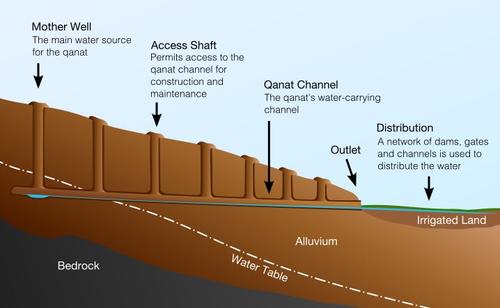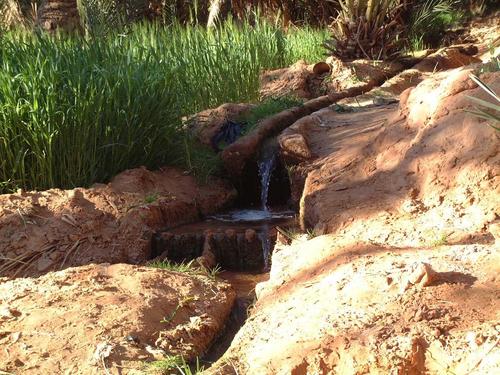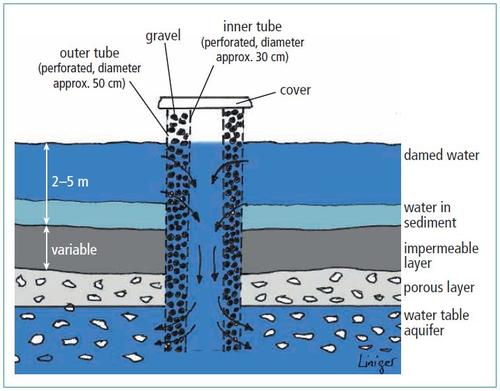Traditional wells
Horizontal wells
This around 2500 year old water harvesting technology of “horizontal wells” originated in Iran. It consists of gently sloping subterranean tunnels dug far enough into alluvium or water-bearing sedimentary rock to pierce the underground water table and penetrate the aquifer beneath. Water from the aquifer filters into the upper reaches of these channels, flows down their gentle slopes, and emerges as a surface stream of water at, or near, a settlement. Horizontal wells are generally constructed on the slopes of foot zone alluvial fans, in intermountain basins, along alluvial valleys that lack large rivers with year-round flows sufficient to support households and irrigation. They are common in arid areas with high evaporation rates where potentially fertile areas are close to precipitation-rich mountains and where underground springs are common. Water channeled to villages or farmland using gravity saves labour as compared to obtaining water from dug wells using manual labour. Rehabilitation and maintenance of these systems need great knowledge and skills. The technology goes by different names: faladsch / aflaj (United Arab Emirates and Oman), foggara (North Africa), galerias (Spain), kanjering (China), karez (Afghanistan, Paksitan), qanats (Syria, Jordan), etc.
Recharge wells
Recharge or injection wells are used to directly recharge water into deep aquifers. Recharge wells are suitable only in areas where a thick impenetrable or slowly permeable layer exists between the soil surface and the aquifer. A relatively high rate of recharge can be attained by this method. To avoid clogging of the well regular maintenance is needed. The recharged groundwater can be accessed by wells and boreholes tapping the same aquifer or feeding natural springs.
(Mekdaschi & Liniger 2013)


